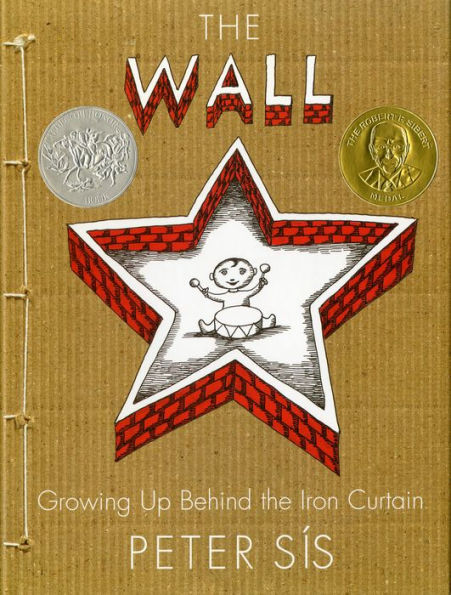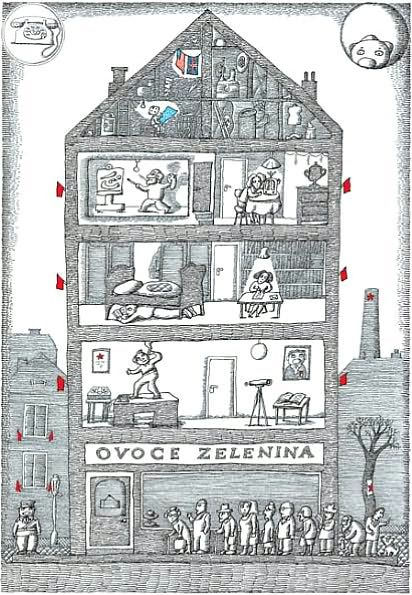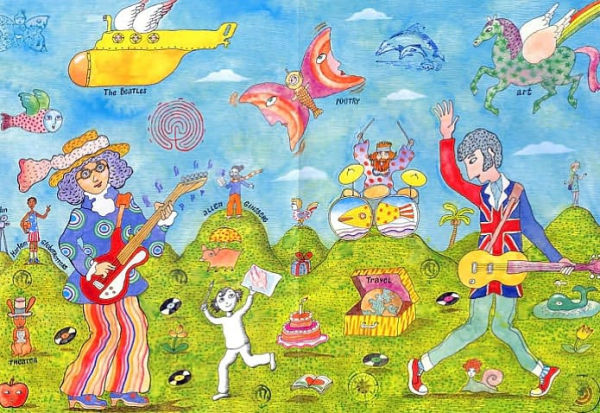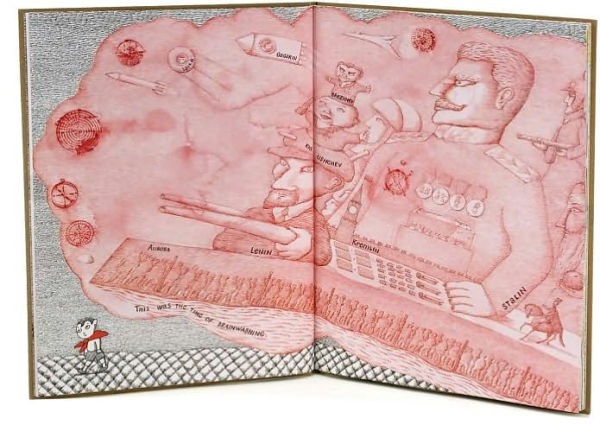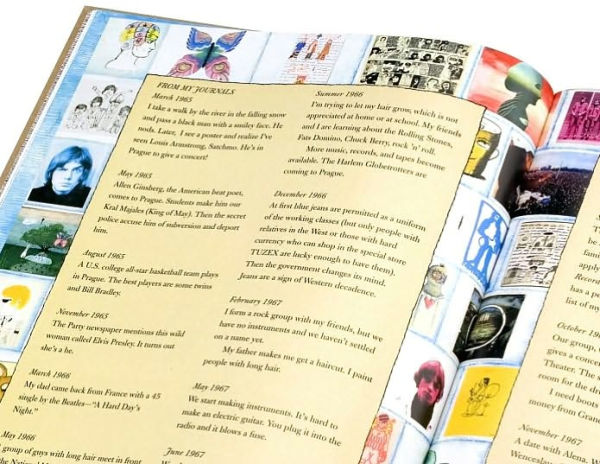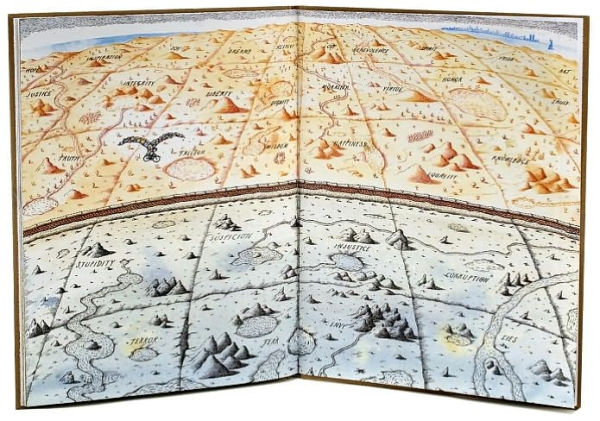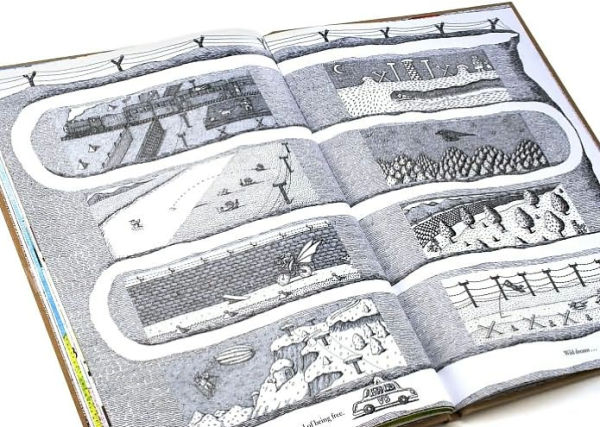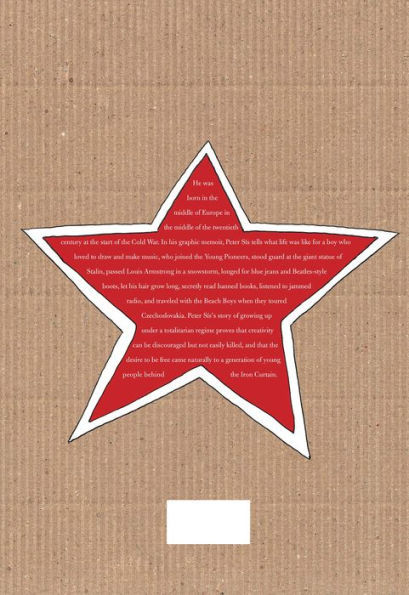Reading Group Guide
Preliminary Activities
Social Studies / History / Map Study
Even before your class reads The Wall, the students can become familiar with the world
Peter Sís grew up in by studying historical maps of Europe.
The political map of Europe changed dramatically over the course of the twentieth century. While existing countries vied for territory, ethnic groups sought to form their own nations. This struggle, which has gone on for centuries, continues today. Look at Europe from the beginning of the twentieth century to the present.
On the next page is a list of Web sites your students can access that show the changes in the European landscape from before World
War I through World War II, the Cold War, and into the present. The sites include maps of
Czechoslovakia then and now. Your students should notice that Czechoslovakia was part of the Austro-Hungarian Empire and didn't exist as a sovereign nation until after World War I;
today it is two separate countries, the Czech
Republic and Slovakia.
To begin, have your students look at the map of
Europe in 1914 before the start of World War I.
Questions to discuss can include but are not limited to:
• Which countries were the dominant forces on the European mainland?
• Which contemporary nations are missing?
With the defeat of Germany in 1919, the map of Europe was redrawn when the Treaty of
Versailles was signed by the United States,
France, and Great Britain. Your students should examine the map of Europe in 1919. Have them list the countries in central and eastern Europe that were created at that time. Then have them look at the maps from 1939, 1942, post–World War II, post–Cold War, and 2004, and track the political history of those countries. Have them discuss the changes.
Art / Book Art
As a reading experience for students in upper elementary, middle, and high school, the combination of words and pictures in The Wall will be especially satisfying. In many ways The
Wall is like a graphic novel, a literary form popular with young readers. Sís fills each spread with images that invite readers to take in not only the meanings of the words but their emotional impact as well. The illustrations provide context. For example, we learn in the first few spreads that while life in
Czechoslovakia was becoming more and more constricted, one little boy was growing up in a loving family. He smiles at us as he learns to express himself in drawings. We see him accommodate the demands of society but also develop a strong spirit and sense of himself.
Ask your students to examine the text and pictures on the first few pages of the book to see how Sís presents not only the realities of life but also the way he, as a child, responded to those realities. Ask them how the author shows his emotional state of being and how that changes when he discovers that "there were things he wasn't told." Discuss the use of the color red in the book's early pages and throughout.
Oral History Project
Sís writes that in 1968, when a new government took over in Prague, "everything seemed possible." Peter was a young adult then, and his vision of Western culture was taking shape.
Even later, when the Soviets invaded, Peter held on to his dream of being a part of that world. Students should look closely at the details in the pictures that depict this period:
the Beatles, the Beach Boys, Allen Ginsberg,
poetry, film, theater, and art. This view of life in the late sixties in the West is idealized.
Have your students investigate what life was like for young people living in the West in 1968.
Create an oral history project. Help the class identify people in the community whom they can interview: aunts, uncles, teachers, and neighbors who were in their late teens in 1968.
Guide the class in developing an interview questionnaire for these oral histories.
Questions can include but are not limited to:
• How old were you in 1968?
• What major events of that time do you recall?
• Were you aware of the Cold War, and, if so,
how did it affect you?
• Who were the important people during that period—in government, music, film,
literature?
• What was the major issue in your life at that time?
• What were you and your peers rebelling against?
• What else would you like to add about that time?
Students will discover that it wasn't all rock 'n'
roll and psychedelic art. The war in Vietnam was raging; civil rights and women's rights were at issue. Leaders Martin Luther King, Jr.,
and Robert F. Kennedy were assassinated. This was not the ideal world the young Peter Sís was imagining.
After the students share the results of their interviews and their conclusions about life in the West in 1968, have them discuss the differences between life in the West and Sís's life in Czechoslovakia at that time.
Students in the upper grades who have learned to make multimedia slide show presentations can use the responses they've gathered to the questionnaires to create a documentary in the manner of Ken Burns. The visuals should be images they find of the 1960s, while the audio should be scripted voice-overs of the individual questionnaire responses.
Art Activities
Art and Style
The Wall chronicles the development of the artist Peter Sís from his childhood in
Czechoslovakia to his departure for the West.
Guide your students to understand more about the artist's methods, media, and styles. Discuss with the class the various techniques Sís uses.
Questions to consider are:
• How does his use of color, line, and shading set the different moods and feelings of the book?
• How does he use shape and design?
• How does he portray images of authority?
Have the class look at other books by Peter
Sís, such as Starry Messenger: Galileo Galilei,
Tibet Through the Red Box, and Madlenka, to see how Sís uses composition to convey his ideas. As an activity, have the students write story lines of their own lives. Then have each student create an illustrated double-page spread with the text running along the bottom and additional illustrations and text around the borders, just as Sís does.
Music and Performing Arts
While local underground rock music was popular with young adults in Czechoslovakia in the late 1960s, it was American and British rock bands they were enamored of. Sís tells us:
"Bits and pieces of news from the West [began]
to slip through the Iron Curtain"—news about the Beatles, Elvis, and the Rolling Stones. On
June 17, 1969, the American rock group the
Beach Boys gave a concert in Prague.
Peter Sís was an ardent rock 'n' roll enthusiast.
He was an emcee and a D.J. with his own radio show. Besides playing music of Czech bands,
he played music of the American and British bands that were popular at that time.
Have your students imagine themselves in 1969
and create music playlists that Sís might have used on his radio program. They should each choose twenty-five bands that were on the music scene then and make a playlist with one song from each band. They might even be able to burn CDs of their selections and perform them as D.J.s.
Some Web sites that may be useful are:
www.scopecreep.com/yahoo/2006/06/19
/the-best-of-1969/#more-857
www.kink.fm/pages/131363.php?content
Type=4&contentId=246654
www.ahs72.org/music.htm www.scaruffi.com/history/cpt27.html
Social Studies Activities
History
In January 1968, Alexander Dubc?ek, the new head of the Communist Party, installed reforms to liberalize the government. Sís writes, "Slowly our world [began] to open up. Censorship
[was] lifted . . . It was the Prague Spring of
1968!" The expression "Prague Spring" has special meaning to Sís and the Czech people.
Unfortunately, it was a short season. In August of that year it came to an abrupt end. Have your students read texts about the Prague
Spring and the Soviet invasion that followed.
These Web sites will help:
http://prague-life.com/prague/prague-spring http://library.thinkquest.org/C001155
/index1.htm http://news.bbc.co.uk/onthisday/hi/dates/stories
/august/21/newsid_2781000/2781867.stm www.rferl.org/specials/invasion1968
http://www.gwu.edu/~nsarchiv/nsa/publications
/DOC_readers/psread/doc81.htm
Once your students have some insight into what the Prague Spring meant to the Czech people, have them write newspaper articles about the newfound freedoms enjoyed during this period—the lack of censorship, the political inclusion, culture, travel, and fashion—or about the Soviet invasion and the loss of what had been gained.
Living History
The subtitle of The Wall is Growing Up Behind the Iron Curtain. It is difficult for anyone who is not from a former Eastern Bloc country to fully understand what that means.
In order for your students to gain some idea of the oppressiveness of life behind the Iron
Curtain, you can simulate that experience in class by creating a divided society. Break the class into two groups. Construct a barrier of desks across the room, separating the front of the room from the back. Explain to your students that the group behind the desks is to be living behind the Iron Curtain just as Sís did in his youth. They will follow strict regulations.
For example, they will be told which books they can read, what clothing they may wear, in what manner they may style their hair, what they will learn, and the type of art they may create. Even at home and in their free time,
there will be restrictions. Some television shows, music, movies, Web sites, and video games will be prohibited.
The group in front of the barrier lives in freedom. They will be allowed to choose their own reading material, dress and wear their hair according to their tastes and individual styles, discuss the topics they will study, and have the right to free expression in their art.
After a few days, have the students switch places and repeat the experiment. Discuss the experience with them. Questions to consider are: How did they feel about being confined behind the desks? Did the group living in freedom have any compassion for the confined group? How did the actual experience differ from what they imagined it would be? Are these kinds of restrictions on personal freedom ever okay? Under what circumstances might they be? Are having parental guidance rules on movies and television programming the same as these kinds of restrictions? Why or why not?
Then have the students write compositions about the experience.
Note: This activity should be cleared through your school administration, and letters should be sent home to parents to explain the nature of the activity.
Intellectual Freedom /
First Amendment Rights
A common thread in all oppressive societies is that the free flow of ideas and information is prohibited. Books and films are banned. Art and culture are censored. Access to the
Internet is limited or denied, or spyware is implemented. Phone taps and electronic surveillance are utilized.
Infractions against civil liberties can happen in free societies like ours. Take, for example, the banning and challenging of books. Many times,
books for children and young adults are challenged and taken off public and school library shelves because someone finds elements in the book which they think minors shouldn't be exposed to.
Read The Wall as a class and hypothesize as to why it might be challenged.
Hold a mock trial in which the book itself is the defendant. Select a student to play the book and another to be the defense attorney. Select a student to be the plaintiff—the challenger—
and another to be the attorney for the plaintiff.
You will also need a judge, jury, bailiff, court reporter, and witnesses. Every member of the class should have a role.
In planning this trial, students should recognize the importance of a justice system that gives due process to all. In Czechoslovakia, under
Communist rule, this did not exist for all citizens. After the decision is rendered, discuss the process.
For more information about intellectual freedom issues pertaining to young people,
download "Kids, Know Your Rights! A Young
Person's Guide to Intellectual Freedom" at www.ala.org/ala/alsc/alscpubs/KidsKnowYour
Rights.pdf.













